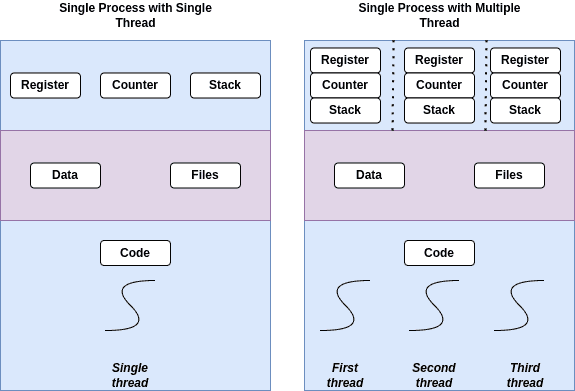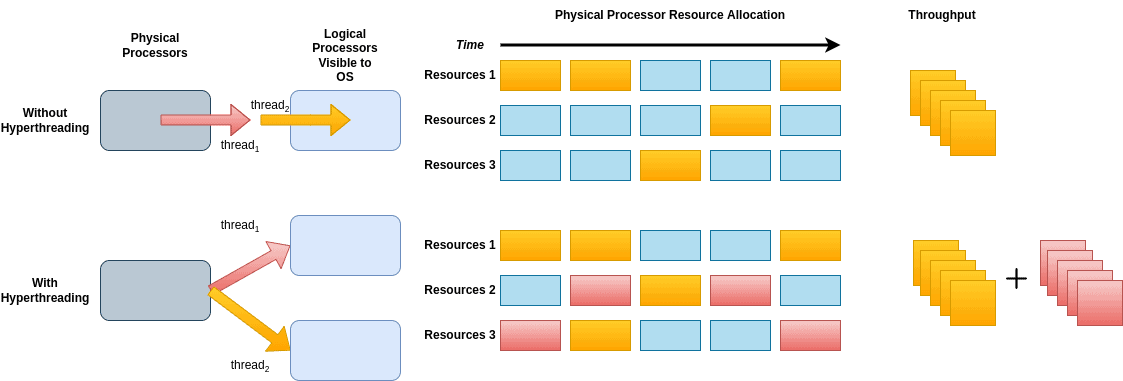1. Introduction
In this tutorial, we’ll walk through two processing techniques of computer science. Particularly we’ll introduce multithreading and hyperthreading techniques, talk about their different approach, highlight their advantages and disadvantages, and discuss their most frequent usage.
2. Multithreading

Generating kernel threads is supported by the operating system. Kernel threads are simpler to maintain but are slower to generate. On the other hand, the management and creation of user threads are simpler. Users can create them via a thread library that is generic and works with any operating system.
3. Hyperthreading
In this technology, the CPU is divided into two or more virtualized CPU cores. These virtualized CPU cores work independently, and thus multiple threads can be executed simultaneously:

Therefore the operating system recognizes each physical core as two virtualized cores, and threads are executed on each visualized core. By doing so, multiple threads are scheduled on a single physical core, and the utilization of the processor is increased.
4. Comparison of Multithreading and Hyperthreading
First of all, multithreading necessitates careful consideration of thread synchronization, race situations, and deadlocks, and thus can generally be a challenging subject. This is because the threads usually have the same memory and resources.
On the other hand, using hyperthreading generally doesn’t involve any additional programming because it is a hardware-level technology. The operating system manages the scheduling of threads on a hyperthreaded core, which divides workloads into processes that can be run independently.
Summary of the differences between multithreading and hyperthreading:
5. Advantages and Disadvantages
Multithreading handles more efficiently tasks that can be parallelized but required more processing power. On the other hand, hyperthreading improves the efficiency of how the processor handles multiple threads and provided high levels of parallelism but doesn’t offer as much processing power as multithreading.
A summary of some benefits and limitations of multithreading and hyperthreading:
6. Use Cases of Multithreading and Hyperthreading
Multithreading is mostly used for tasks that can be easily divided into multiple threads and don’t include data dependencies meaning they don’t heavily depend on each other or include several hazards. Tasks that can be broken into several threads and be executed simultaneously usually include desktop applications such as file I/O, web browsing, networking, and image processing.
Hyperthreading is more employed for tasks that require a high degree of parallelism, such as video editing, 3D rendering, and scientific and mathematical simulations.
Note that it is important to consider the specific needs of your workloads and the capabilities of your system before deciding which technology to use.
7. Conclusion
Hyperthreading breaks a single physical processor into two logical/virtual processors, whereas multithreading simultaneously runs numerous threads in a single process. This is the primary distinction between the two techniques. Also, the difficulty of programming multithreading and hyperthreading may range depending on the programming language, the specific requirements of the application, and the level of support provided by the hardware and operating system.
In this tutorial, we analyzed the most important aspects of multithreading and hyperthreading and highlighted their differences along with their main advantages, disadvantages, and usages.